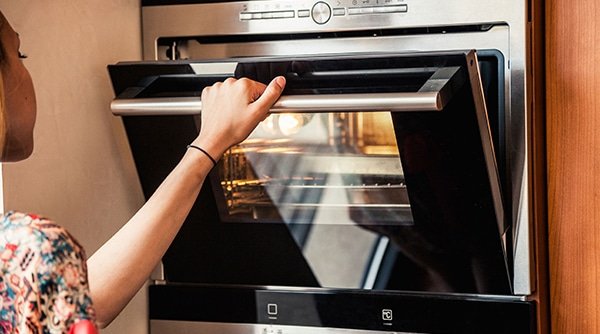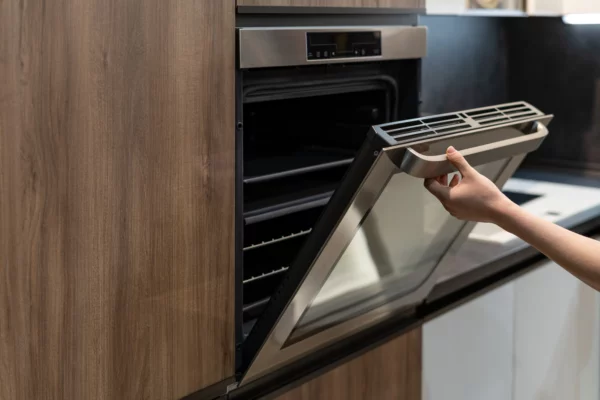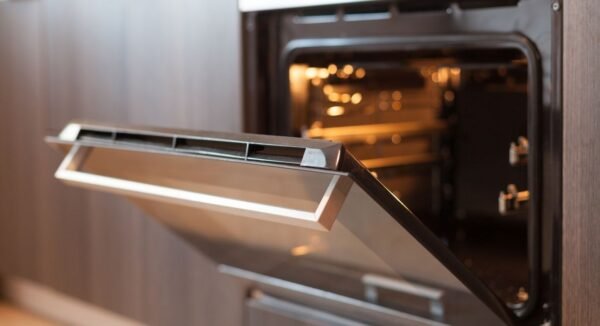
From Uneven Cooking to Strange Noises: Understanding Typical Oven Malfunctions

We’ve all been there – eagerly preparing a delicious meal, only to be met with frustration when our oven decides to act up. Oven malfunctions can be a real headache, but fear not! In this guide, we’ll take a close look at some common oven issues and how to troubleshoot them. If you can’t fix the issues yourself, use Avi’s Best to find a reputable repair specialist. From uneven cooking to mysterious noises, we’ve got you covered.
Section 1: Uneven Cooking
One of the most frustrating problems you might encounter with your oven is uneven cooking. You place your food in, expecting it to cook evenly, but it comes out with one side burnt to a crisp and the other side undercooked. Let’s explore the possible culprits and solutions:
1.1: Rack Placement Matters
Sometimes, uneven cooking can be as simple as improper rack placement. Make sure you’re using the correct rack position for the dish you’re cooking. Lower racks are better for roasting, while upper racks are ideal for broiling.
1.2: Check for Temperature Accuracy
Ovens can drift in temperature over time. Invest in an oven thermometer to ensure your oven’s temperature matches the setting. If it’s off, consult your oven’s manual for recalibration instructions.
1.3: Rotate Your Dishes
To promote even cooking, consider rotating your dishes halfway through the cooking time. This helps distribute heat more evenly, especially in ovens with hot spots.
1.4: Use Baking Stones or Sheets
Baking stones or sheets can help absorb and distribute heat more evenly, resulting in a more uniform cooking experience.
Section 2: Oven Not Heating Up

Another common issue is when your oven refuses to reach the desired temperature. You preheat it, but it never quite gets there. Here’s what you can do:
2.1: Check the Igniter
A faulty igniter can prevent your oven from heating up. If it doesn’t glow when you turn the oven on, it may need replacement. Consult your oven’s manual or a technician for assistance.
2.2: Inspect the Gas Supply
If you have a gas oven, ensure that the gas supply is turned on and that there are no leaks. If you suspect a gas leak, contact a professional immediately.
2.3: Verify the Heating Element
Electric ovens rely on heating elements. If one is damaged, your oven may not heat properly. You can usually see the elements inside the oven and replace them if necessary.
Section 3: Strange Noises
Ovens are generally supposed to be quiet while they work their culinary magic, so strange noises can be particularly unsettling. Let’s unravel the mystery of those unsettling oven sounds:
3.1: Bangs and Pops
These sounds can often be attributed to the oven expanding and contracting as it heats up and cools down. It’s usually harmless, but if the noises persist, it’s best to have a professional inspect it.
3.2: Clicking or Ticking
Clicking noises may result from the oven’s timer or control panel. If it’s excessive or your oven isn’t working correctly, it’s time to call in the experts.
3.3: Fan Noise
Modern ovens often have fans for even heat distribution. A noisy fan might be a sign of a loose or damaged fan blade. In this case, it’s best to get it repaired.
Section 4: Oven Not Self-Cleaning
Many ovens these days come with the handy self-cleaning feature, but what if it’s not working as expected? Here’s what you can do:
4.1: Check the Door Lock
Before starting a self-cleaning cycle, your oven’s door should lock automatically. If it doesn’t, the self-cleaning cycle won’t begin. Ensure the door is properly closed and latched.
4.2: Allow Time for Cooling
After a self-cleaning cycle, the oven door will remain locked until it has cooled down to a safe temperature. Be patient and wait for it to unlock naturally.
4.3: Clean the Oven Manually
If all else fails, you can still clean your oven manually with some elbow grease. Use a non-toxic oven cleaner and follow the manufacturer’s instructions.
Section 5: Oven Smells Like Burning
A burning smell coming from your oven can be alarming. It’s crucial to identify the source and address it promptly:
5.1: Food Spills and Residue
Over time, food spills and residue can accumulate in your oven and start to burn when you use it. Regularly clean your oven to prevent this issue.
5.2: Check the Heating Element
If your oven smells like burning but there’s no visible residue, the heating element might be malfunctioning. Turn off the oven and consult a technician.
5.3: Inspect the Wiring
In some cases, burnt wiring or insulation inside the oven can produce a burning smell. This is a serious issue that requires immediate professional attention.
Section 6: Oven Doesn’t Maintain Temperature

Your oven should maintain a consistent temperature throughout the cooking process. If it can’t, your dishes may suffer. Here’s how to address this problem:
6.1: Test the Temperature
Use an oven thermometer to monitor the temperature inside the oven. If it fluctuates significantly, it’s time for some troubleshooting.
6.2: Check the Seal
A damaged or worn door seal can let heat escape, causing temperature inconsistencies. Replace the seal if necessary.
6.3: Calibrate the Oven
Some ovens allow you to recalibrate the temperature settings. Consult your oven’s manual for instructions on how to do this.
Conclusion
Oven malfunctions can be a real hassle, but armed with the knowledge and tips from this guide, you’ll be better equipped to tackle common oven issues. Remember to always prioritize safety and consult a professional technician when needed. With a little troubleshooting and maintenance, you can keep your oven in top shape and continue cooking up delicious meals with confidence. Don’t let those oven quirks get the best of you – take control and cook on!











































